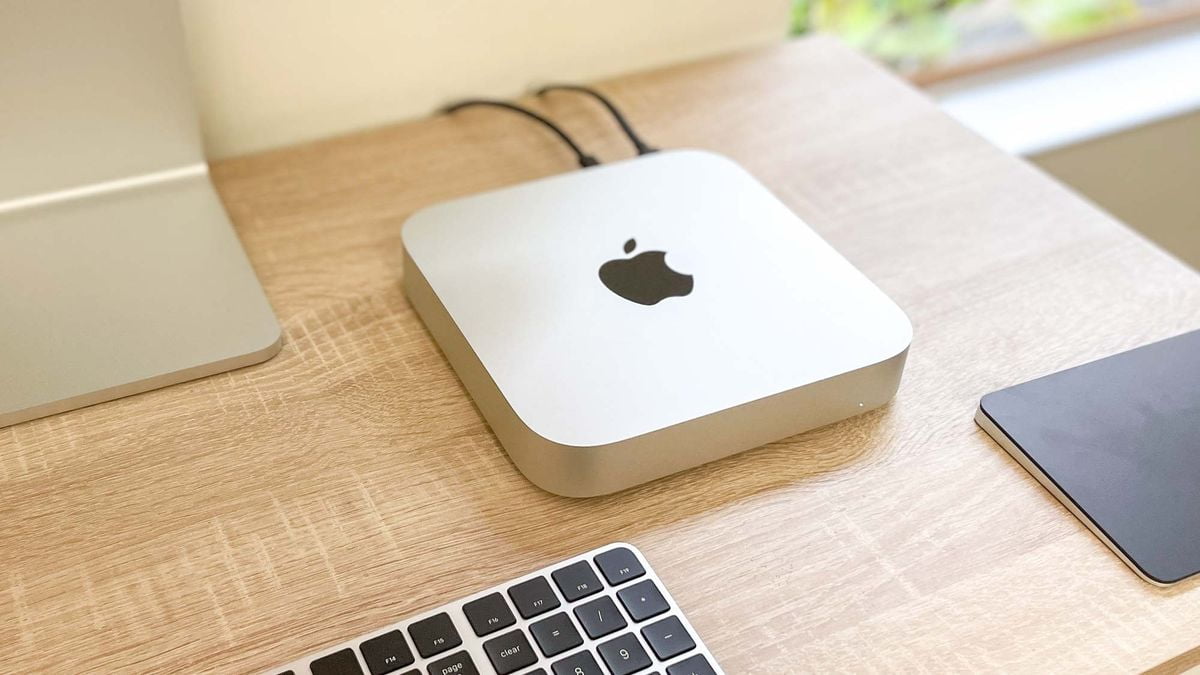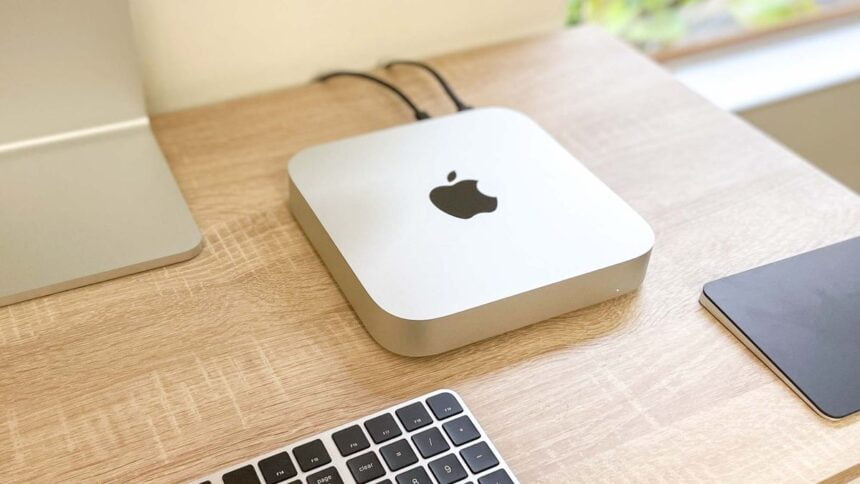If you’re a Mac Mini owner and have been wondering if you can run Windows alongside macOS, the answer is yes! With the right tools and techniques, you can install and run Windows on Mac Mini, creating a versatile system that offers the best of both worlds.
Whether you’re a gamer, a developer, or someone who needs Windows-only applications, installing Windows on your Mac Mini can open up a range of possibilities. In this guide, we’ll walk you through the steps on how to install Windows on Mac Mini, the advantages and challenges of using Windows on a Mac, and answer some frequently asked questions.

Why Would You Want to Run Windows on a Mac Mini?
Before diving into the installation process, let’s first explore why you might want to run Windows on your Mac Mini in the first place. Here are some common reasons:
1. Access to Windows-Only Software
Certain software applications are only available for Windows. These could be productivity tools, design programs, or games that aren’t supported by macOS. By running Windows on your Mac Mini, you can access these programs without needing a separate PC.
2. Gaming on Mac Mini
Mac Mini models with higher specifications can support Windows games that may not be available on macOS. This is especially useful for gamers who want to experience titles that are only optimized for Windows.
3. Development Needs
Some developers require Windows to test applications, particularly for .NET development or other Windows-based programming environments. Installing Windows on a Mac Mini can allow them to work on multiple platforms without the need for separate hardware.
4. Better Performance for Certain Applications
Some Windows applications may run more efficiently on Windows, especially if they are designed for the OS. By running Windows directly on your Mac Mini, you can avoid the limitations of running such applications through emulation or virtual machines on macOS.
How to Run Windows on Mac Mini: 3 Methods
There are several ways to install and run Windows on your Mac Mini, with the two most popular being Boot Camp and virtualization software. Here, we’ll explain how to use each method.
1. Using Boot Camp to Install Windows
Boot Camp is Apple’s official solution for running Windows on Mac computers. It allows you to install Windows on a separate partition, and when you start your Mac Mini, you can choose whether to boot into macOS or Windows. This method provides the best performance because it runs Windows natively.
Steps to install Windows with Boot Camp on Mac Mini:
- Check System Requirements Ensure your Mac Mini meets the requirements for running Windows through Boot Camp. You’ll need at least 64 GB of free storage on your Mac Mini for the installation.
- Download Windows ISO Download the Windows ISO file from the official Microsoft website. You will need to choose the version of Windows 10 or Windows 11 you want to install.
- Open Boot Camp Assistant Launch Boot Camp Assistant, which is built into macOS. This tool will help you partition your hard drive and guide you through the installation process.
- Partition Your Hard Drive During the installation process, Boot Camp Assistant will prompt you to partition your Mac Mini’s hard drive. You can allocate space for Windows according to your needs. We recommend at least 64 GB for a smooth experience.
- Install Windows Once you’ve allocated space, Boot Camp will automatically install Windows. The process will take some time, and your Mac Mini will reboot several times.
- Install Boot Camp Drivers After the installation is complete, Boot Camp Assistant will prompt you to install the necessary drivers for Windows. This ensures that everything from the trackpad to the graphics card works properly in Windows.
- Reboot and Choose Your OS After the installation, you can reboot your Mac Mini and hold down the Option key to choose which operating system to boot into—macOS or Windows.
2. Using Virtualization Software
If you don’t want to reboot your Mac Mini every time you need Windows, you can use virtualization software. This method allows you to run Windows within macOS, meaning you can have both operating systems running simultaneously. The most popular virtualization tools are Parallels Desktop and VMware Fusion.
Steps to install Windows using Parallels Desktop:
- Download and Install Parallels Desktop First, download Parallels Desktop from the official website. The software offers a trial period, and you can decide if you want to purchase the full version later.
- Create a New Virtual Machine Launch Parallels Desktop and choose the option to create a new virtual machine. You will be prompted to select your Windows ISO file (downloaded from Microsoft).
- Install Windows Follow the prompts to install Windows on the virtual machine. The process is similar to installing Windows on a physical machine, but it runs within the virtual environment.
- Configure Virtual Machine Settings Customize the virtual machine’s settings, such as the amount of RAM and CPU cores you want to allocate to Windows. This will help you optimize the performance of Windows on your Mac Mini.
- Run Windows in Parallels Once Windows is installed, you can run it alongside macOS. You can switch between macOS and Windows seamlessly without needing to reboot your computer.
3. Using CrossOver for Mac
CrossOver is another option that allows you to run Windows applications on macOS without installing a full version of Windows. Unlike Boot Camp or Parallels, CrossOver doesn’t require you to run a separate operating system. Instead, it allows you to run Windows apps directly within macOS.
Steps to use CrossOver for Mac:
- Download and Install CrossOver Download CrossOver from the official website and install it on your Mac Mini.
- Install Windows Software Open CrossOver and select the Windows app you want to run. CrossOver will automatically install the necessary Windows libraries to run the software.
- Run Windows Apps Once the installation is complete, you can run Windows applications within macOS. This method is ideal for running individual Windows programs without the need for a full Windows installation.
Benefits of Running Windows on Mac Mini
Running Windows on your Mac Mini offers several advantages:
1. Access to Both Operating Systems
By running Windows on Mac Mini, you can enjoy the benefits of both macOS and Windows. This flexibility allows you to use the best features of each operating system based on your needs.
2. Improved Performance with Boot Camp
If you need the full power of Windows and plan to run demanding applications or games, using Boot Camp gives you the best performance since Windows runs natively on your hardware.
3. Run Windows-Only Software
Many software applications are exclusive to Windows, such as certain engineering tools, games, and enterprise-level software. Running Windows on your Mac Mini allows you to access these programs without the need for a separate PC.
Challenges of Running Windows on Mac Mini
While running Windows on your Mac Mini is beneficial, there are some challenges:
1. Performance Considerations (Virtualization)
Running Windows in a virtual machine (using software like Parallels) can cause performance issues, especially if your Mac Mini doesn’t have enough resources like RAM or a powerful CPU.
2. Disk Space Usage
Installing Windows via Boot Camp or virtualization requires a significant amount of disk space. You may need to manage your storage carefully to ensure there’s enough space for both operating systems and their applications.
3. Software Compatibility
Some Windows applications may not run perfectly on macOS or in a virtual machine. This can cause glitches or crashes, particularly with demanding software like games or professional tools.
Conclusion: Should You Run Windows on Mac Mini?
Running Windows on a Mac Mini can be a great solution for those who need to access Windows-only software, play Windows games, or need a Windows development environment. The best method for you will depend on your use case—Boot Camp is ideal for the best performance, virtualization software offers flexibility, and CrossOver is a quick and easy way to run specific Windows apps.
If you need to use both operating systems, having Windows on your Mac Mini can greatly expand your capabilities without needing to purchase a separate PC. With the right setup, you can get the best of both worlds: the power of macOS and the versatility of Windows.



